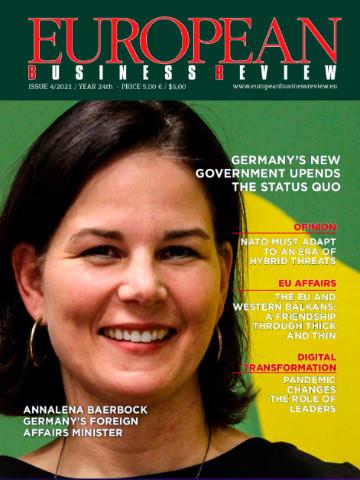Adequate interconnection and reverse flow options are crucial, and a solid infrastructure is indispensable if Europe’s internal energy market is to be achieved.

To ensure their energy security, the EU’s member states need to be able to help each other in times of need.
by
Günther
Oettinger*
To ensure their energy security, the EU’s
member states need to be able to help each other in times of need. That means
that adequate interconnection and reverse flow options are crucial, and a solid
infrastructure is indispensable if Europe’s internal energy market is to be
achieved.
In turn, an
efficiently functioning European internal market for gas will enhance our
security of supply. And when gas becomes a freely traded commodity, its use as
a tool in political power games is reduced.
The EU
Commission’s analysis shows that roughly €30bn could be saved every year till
2030 providing we can achieve the full integration of our national gas markets.
These benefits would mostly come from more competitive gas wholesale prices.
But that requires sufficient infrastructure to ensure that these markets are
fully connected so that gas can be traded freely.
What do we
need to do to enhance our infrastructure and achieve these objectives? The EU’s
gas infrastructure policy is driven by the regulation on trans-European
networks for energy (TEN-E Regulation), and the new one that entered into force
last year will help to improve Europe’s gas infrastructure in a number of ways.
First, it
consists of a flexible approach that is tailored to the specific needs and
challenges of the EU’s different regions.
This helps us identify the
investments that are most urgently needed, not least in terms of the security
of supply challenges we face.
It therefore focuses on ending the energy
isolation of the Baltic member states and overcoming single source dependency
in central and eastern Europe.
At the same time, it aims to promote further
market integration in the West and also looks at supply diversification options
through the Southern Gas Corridor.
To support
these goals, we identified “Projects of Common Interest” a year ago, in October
2013, which benefit from efficient permit-granting procedures and improved
regulatory conditions.
Among the 248 key energy infrastructure projects listed,
107 relate to gas; half of these are in central and south eastern Europe, 27 in
western Europe, 15 in the Baltic Sea region and 12 in the Southern Gas
Corridor, which will link the European markets to the Caspian region.
There are
also several LNG terminals and storage projects, as well as reverse flow
projects. Under normal circumstances, it is expected that all the gas projects
will be completed by 2020, and that will considerably strengthen Europe’s
energy security.
Second, the
TEN-E Regulation tackles the greatest barriers to infrastructure development by
streamlining permit-granting procedures and ensuring the fairer distribution of
investment costs based on the benefits to be brought by each project.
Third, it
addresses some of the financing questions related to infrastructure projects.
The Connecting Europe Facility, which earmarks €5.85bn for energy
infrastructure until the end of 2020, may support the implementation of some of
the Projects of Common Interest, but this applies only to projects with
positive European benefits that cannot be developed on purely commercial terms.
In the European Energy Security Strategy the Commission presented earlier this
year we gave a further indication of where our strategic priorities lie; 33
critical energy infrastructure projects were identified, 27 of which concern
gas.
If we want to speed up these projects, early support under the Connecting
Europe Facility would certainly help, but in many cases it is political support
that would be even more important.
We
shouldn’t forget that much has already been achieved in improving gas
infrastructure around the EU. Reverse flow capabilities and new
interconnectors, as well as new LNG terminals have been built during the past
few years, especially in the aftermath of the 2009 gas crisis.
Most of the
projects have been co-financed by the EU, although the work is still not yet
completed.To be
absolutely clear, I must emphasise that words are not
enough to improve the EU’s infrastructure.
What we need is action, and this
demands a greater effort on all sides.
It means a stronger commitment by
project promoters when examining technical ways accelerating implementation; by
regulatory authorities who must agree on cost allocation and funding; and by
national ministries that need to ensure the necessary political support while
also tapping into all possible financing sources, including the EU’s structural
funds, cohesion funding and the European Investment Bank.
Developing
Europe’s energy infrastructure will demand close co-operation and co-ordination
between EU member states. The energy challenges that now confront us underline
the way in which we have to “think European” if we are to improve our energy
security.
The EU can only win if it plays as a team.
*Former EU Commissioner for energy and now EU
Commissioner for the Digital Economy and Society




 By: N. Peter Kramer
By: N. Peter Kramer

